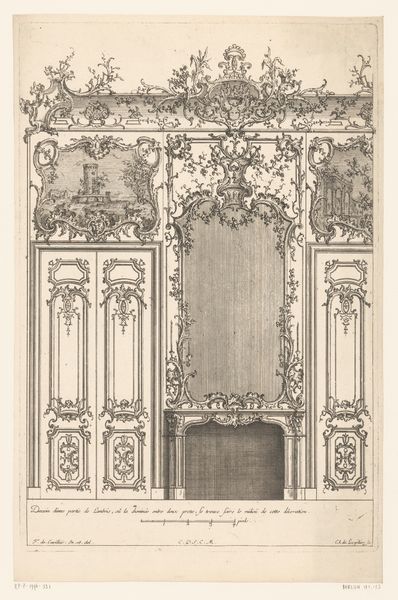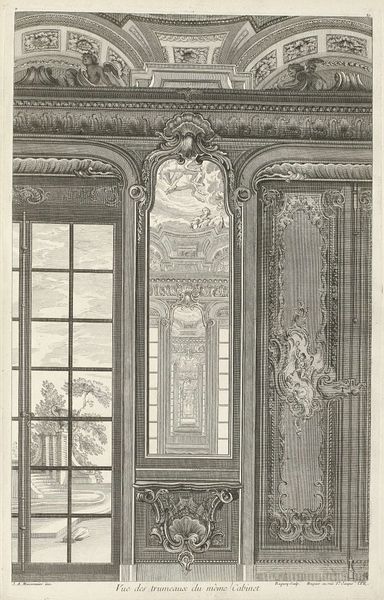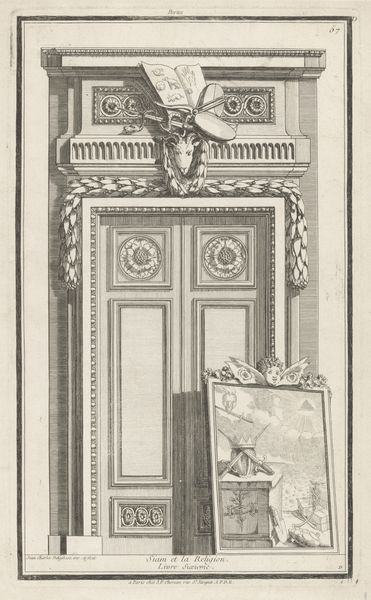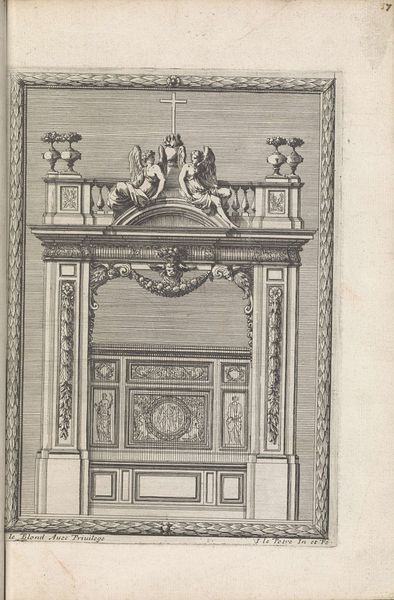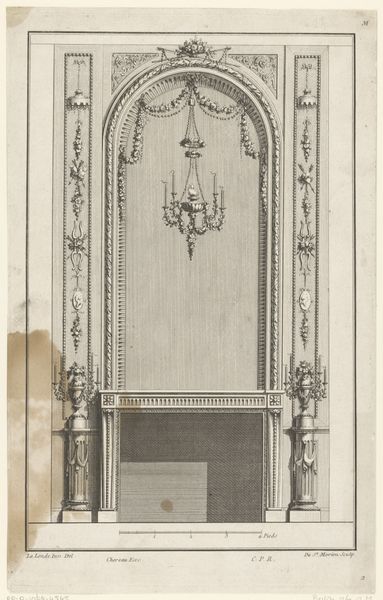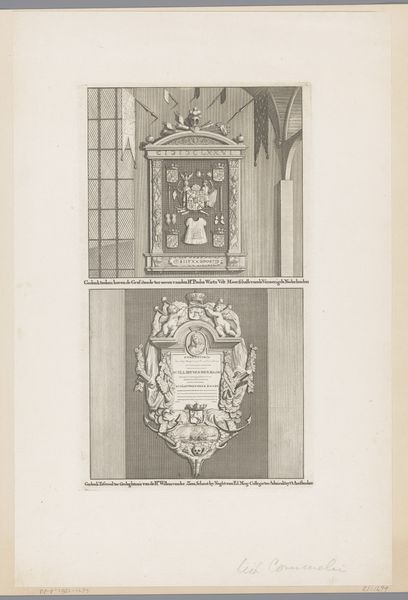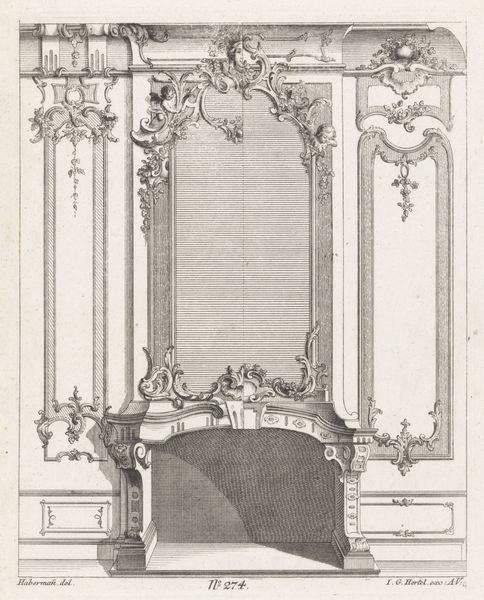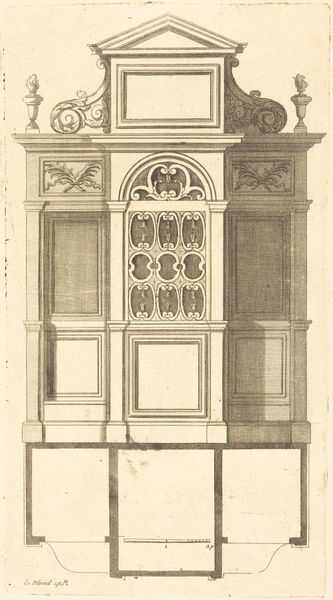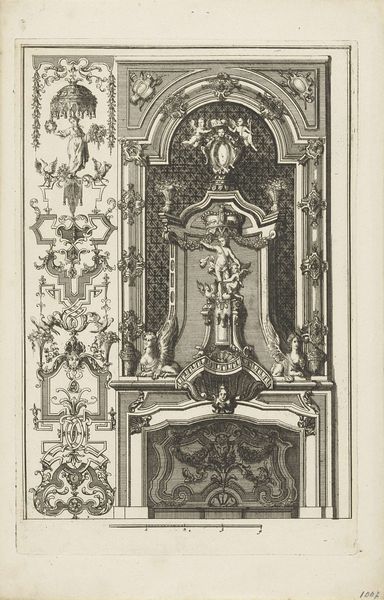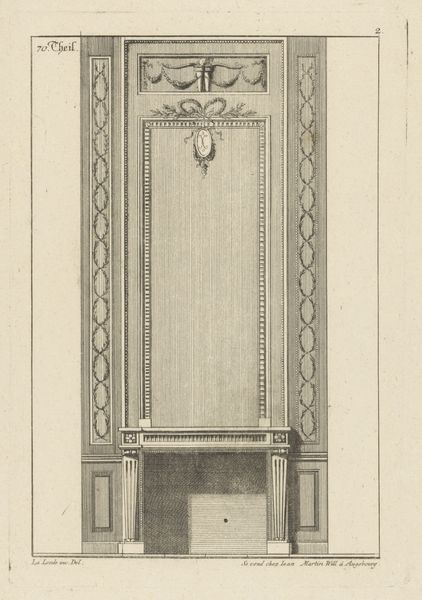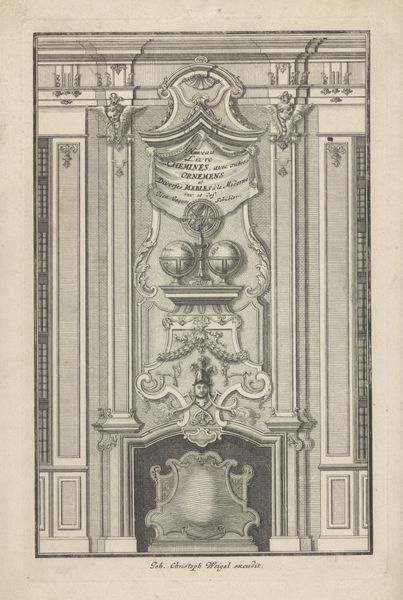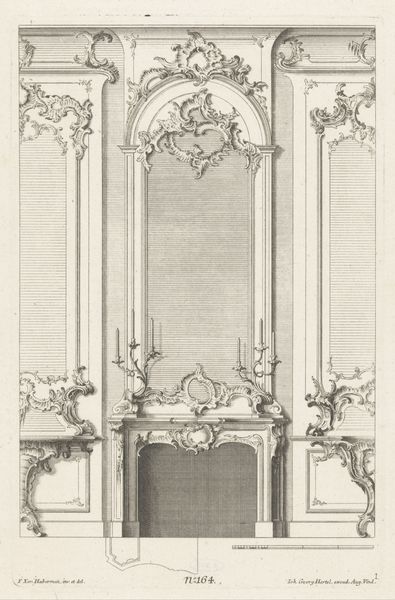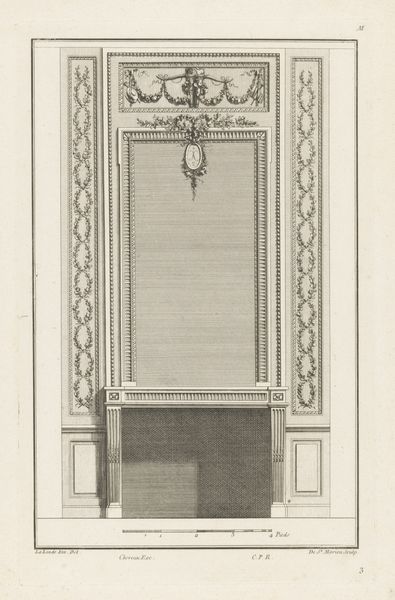
Fireplace: in the frieze of Medusa heads 3 horns of plenty joined by the sides of Aries heads
0:00
0:00
drawing, print, engraving, architecture
#
drawing
#
neoclacissism
# print
#
sculpture
#
geometric
#
line
#
history-painting
#
decorative-art
#
engraving
#
architecture
Copyright: Public domain
Curator: Here we have a striking engraving by Giovanni Battista Piranesi, titled "Fireplace: in the frieze of Medusa heads 3 horns of plenty joined by the sides of Aries heads". Editor: The precision and the intricacy of the line work is astonishing! It looks as though the engraving is not just a drawing, but a model for an architect's plan. The rendering has such intensity; every ornamental aspect seems hyper-detailed, practically jumping off the page. Curator: Indeed, Piranesi’s architectural prints are known for their dramatic and detailed style, but beyond mere visual appeal, this print embodies a specific cultural aspiration. It draws heavily from antiquity, showcasing not only the era's decorative inclinations but its obsession with historical and mythical allusions. Think about how the Medusa heads were appropriated, a cautionary image transformed into decoration. Editor: That interplay of beauty and danger, order and chaos, is precisely what captivates me. It draws the eye up and across the structure, demanding that each section get our scrutiny, so it exemplifies how form, not just content, produces a strong emotional response in the viewer. There are underlying philosophical influences: it challenges our perception and expectations around balance and symmetry. Curator: Consider then who these fireplace designs would have appealed to; these aspirational images are catered to a particular type of person, a moneyed individual ready to adopt classical aesthetics as signifiers of knowledge, good taste, and societal standing. But this engraving has done so much more in contemporary artistic circles! It prompts conversations on commodification, colonial consumption, and elitist symbolism that affect marginalized populations. Editor: So we must remember it can be about structure AND meaning. I appreciate your insights into the context of the image’s circulation, especially how this connects decorative and architectural practices in order to better inform broader critical dialogues. The print now takes on additional weight as we've taken into account not only our perspectives, but others' that could find either beauty, discomfort, or both in this representation. Curator: Absolutely! It showcases the intricate intersections between class, artistic expression, and political identity that shape the cultural significance of decorative art. Editor: Agreed. I am grateful for your viewpoint because now when I view this I’m aware that what may have appeared to me as simply ornamentation is an indication of something more deeply personal and politically important.
Comments
No comments
Be the first to comment and join the conversation on the ultimate creative platform.
